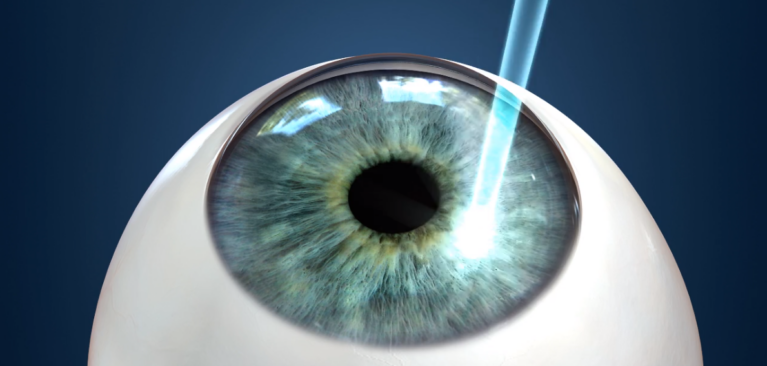
Keratomileusis is a surgical procedure that is used to correct vision problems. It is a type of laser eye surgery that is used to treat myopia, hyperopia, and astigmatism. In this blog post, we will discuss what keratomileusis is, how it works, and who is a good candidate for the surgery. We will also answer some common questions about the procedure. If you are considering keratomileusis surgery, then this blog post is for you.
Contents
Keratomileusis, also known as CK, is a refractive surgery used to correct vision in people with nearsightedness, farsightedness, and astigmatism. The surgery involves the use of a laser to change the shape of the cornea.
There are two types of keratomileusis: photorefractive keratectomy (PRK) and laser-assisted in situ keratomileuses (LASIK).
There are also how many types of laser vision surgery, each with its own advantages and disadvantages.
There are many types of keratomileusis, each with different benefits and drawbacks. The most popular type is LASIK, which uses a laser to create a thin flap in the cornea. Other types include PRK, CK, and FLEX.
LASIK is the most popular type of keratomileusis because it is quick and has a high success rate. However, it does have some risks, such as dry eye syndrome and night vision problems.
PRK is another common type of keratomileusis. It does not require the creation of a flap, so it has a lower risk of complications. However, it takes longer to recover from than LASIK and has a slightly lower success rate. There are also many types of PRK, including traditional PRK, LASEK, and Epi-LASIK.
CK is a newer type of keratomileusis that uses a laser to sculpt the cornea. It has a very high success rate and a shorter recovery time than other types of keratomileusis. However, it is more expensive than other types of surgery.
FLEX is a type of keratomileusis that uses an artificial lens to correct vision. It has a high success rate and can be used to correct many different types of vision problems. However, it is not yet FDA-approved in the United States.
The working of this surgery is based on the fact that when the cornea is cut with a blade, it heals quickly and without any scarring. This is because the cornea has no blood vessels to supply it with nutrients and oxygen. The incisions made during keratomileusis are so small and precise that they do not cause any damage to the surrounding tissue.
The first step of this surgery involves numbing the eye with anesthetic drops. A suction ring is then placed on the eye to keep it from moving. Next, a thin layer of tissue is removed from the cornea using a surgical instrument called a microkeratome. This layer, known as the epithelium, is responsible for protecting the cornea from infection. It will grow back in a few days.
The next step is to sculpt the cornea using an excimer laser. This laser removes tissue from the cornea, changing its shape. The surgeon will then place a contact lens on your eye to protect it while it heals. It usually takes about two weeks for the eye to heal completely. During this time, you may experience some side effects, such as blurred vision and light sensitivity.
There are many benefits of keratomileusis, which is why it is such a popular procedure. Some of the benefits include:
-It can correct a wide range of refractive errors including myopia, hyperopia, and astigmatism
-It is a safe and effective procedure with a high success rate
-There is no need for stitches or anesthesia
-It can be performed on both children and adults
-The recovery time is short and there are usually no side effects
There are also many benefits of this procedure over other types of refractive surgery, such as LASIK. Some of these benefits include:
-It can be performed on patients with thin corneas
-There is less risk of dry eye after the procedure
-There is less risk of night vision problems
-The results are usually more stable over time
If you are considering keratomileusis, be sure to consult with an experienced and reputable surgeon to ensure that you are a good candidate for the procedure and that it will meet your individual needs and expectations.
There are many limitations of Kerato-Mileusis which include:
-It is not a very precise or exact procedure
-The results are not always perfect and can be quite unpredictable
-It is a very expensive surgery with high risks involved
-There is a long recovery period and side effects such as pain, swelling, and redness can persist for weeks or even months.
Despite these limitations, keratomileusis remains one of the most popular refractive surgery procedures due to its relatively high success rate and low complication rate. If you are considering this procedure, be sure to consult with a qualified ophthalmologist to discuss whether it is right for you. Thanks for reading.
Keratomileusis is considered one of the most effective methods of vision correction, with a success rate of over 95%. Although there are some risks involved, these are typically minor and can be easily managed by your surgeon. If you’re considering this procedure, be sure to consult with an experienced and reputable ophthalmologist to ensure the best possible outcome. Thanks for reading!
We hope you found this article helpful. If you have any questions or would like to learn more about Keratomileusis, please contact us today. We offer free consultations and would be happy to answer any of your questions. Schedule yours today!
Here at Eye Mantra, we have an incredibly skilled team of health care professionals who will be happy to help you out. For any assistance regarding eyes and other related issues, you can reach out to us.
Book an appointment with us immediately by calling +91-9711115191. However, you can even mail us at eyemantra1@gmail.com or visit our site- EyeMantra.